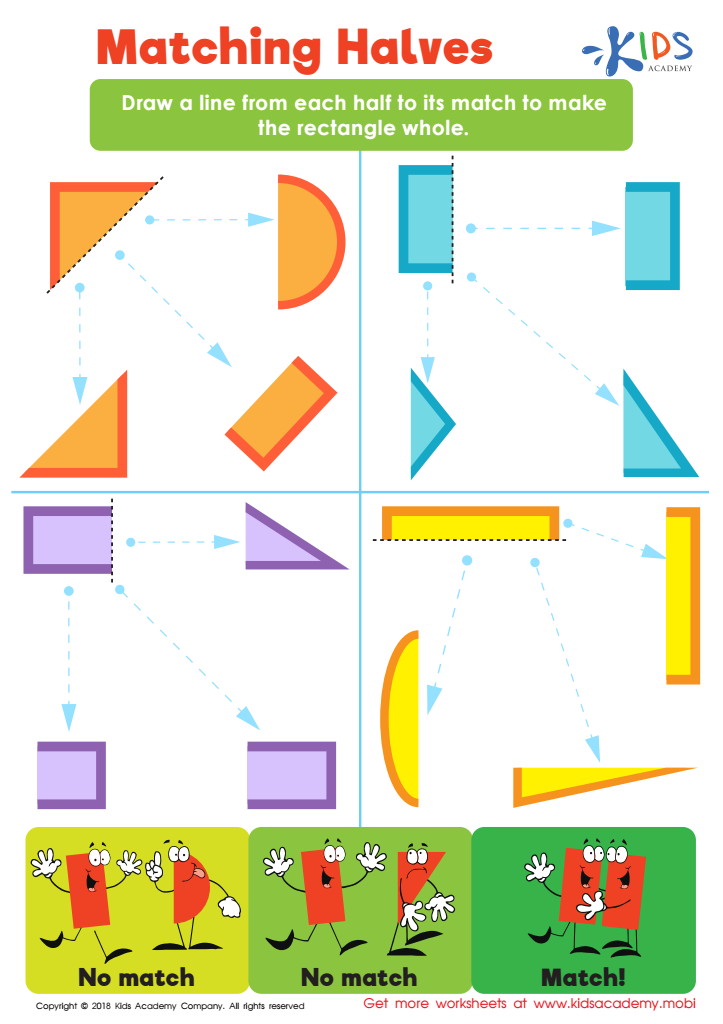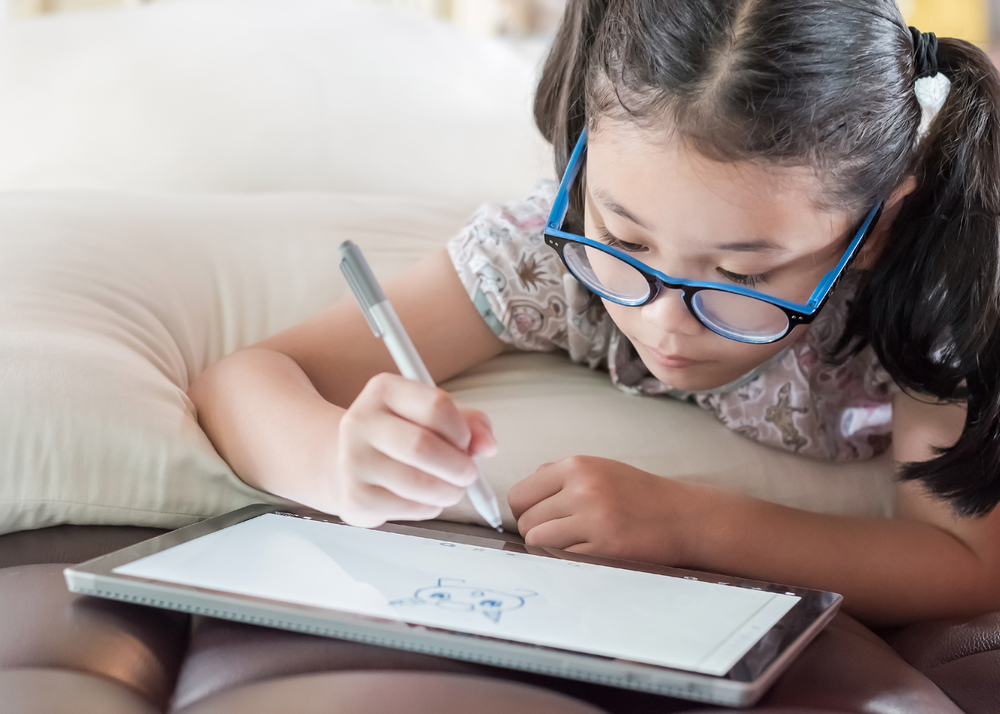Symmetry understanding Worksheets for Kids
1 filtered results
-
From - To


Matching Halves Worksheet
Question/Answer
How to train the Symmetry understanding skill in Grade 2 students learning about Geometry?
To train Grade 2 students' understanding of symmetry in Geometry, use hands-on activities like folding paper to find lines of symmetry, drawing symmetrical objects, or using mirrors to explore symmetry in shapes and letters. Incorporating symmetry hunts, where students find examples of symmetry in the classroom or outside, also helps reinforce the concept in a fun and engaging way.
What are some effective activities to train students’ Symmetry understanding skill when teaching them about Geometry?
To enhance students' understanding of symmetry, you can engage them in activities such as creating symmetrical drawings or paintings, using mirrors to explore line symmetry, folding paper to find lines of symmetry, exploring rotational symmetry with objects like kaleidoscopes, and using symmetry-based puzzles and tangrams.
Why is the Symmetry understanding skill important for Grade 2 students?
The Symmetry understanding skill is crucial for Grade 2 students as it lays the foundation for recognizing patterns, shapes, and spatial relationships, which are key concepts in geometry. It enhances their mathematical reasoning and problem-solving abilities, and promotes visual learning and creativity. Additionally, understanding symmetry aids in the development of fine motor skills and observational skills.
 Assign to the classroom
Assign to the classroom



.jpg)







